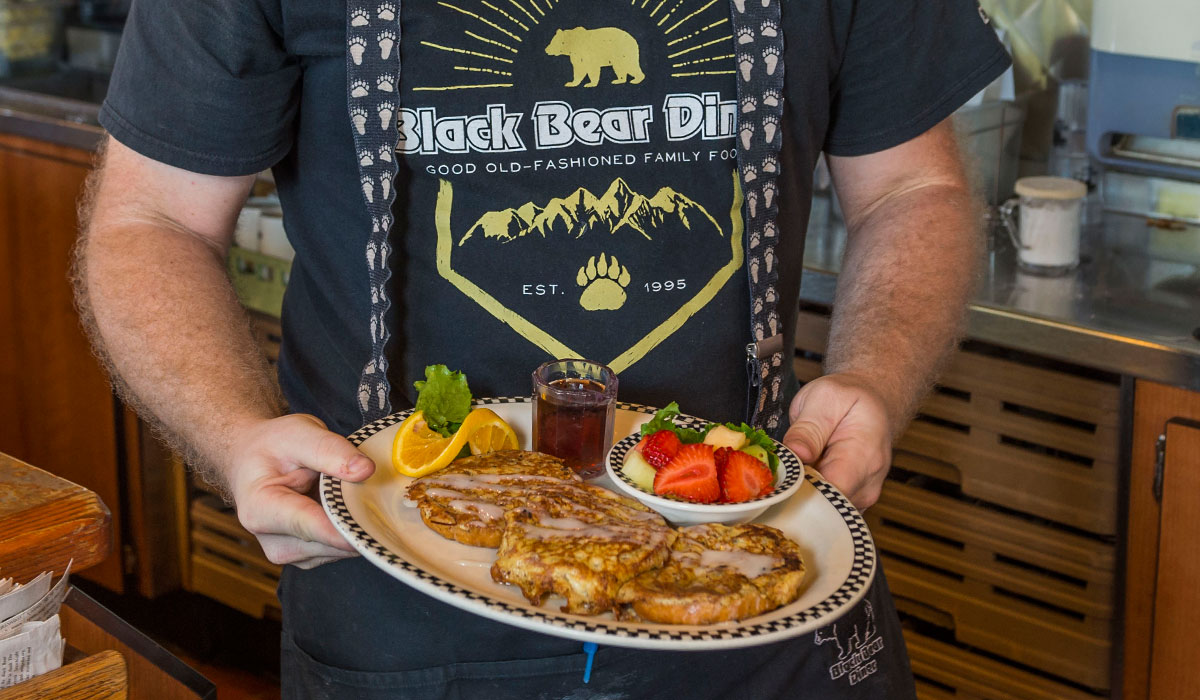By 2015, Black Bear Diner was riding high. The brand, which launched in Mount Shasta, California, in 1995, had expanded to 67 locations and would close the year with 75. Franchise demand for the family diner concept was booming, and it had spread its reach to several Western states.
But operating dozens of restaurants isn’t the same as operating one or two. Growth puts pressure on a restaurant team, and models and systems are necessary to replicate the concept consistently in far-flung towns. And it was around 2015 that Black Bear Diner’s leaders realized that the training setup was particularly strained, as the company was using a paper module to document processes, recipes, and other how-to information.
It was hard for the corporate team to update, and hard for the franchisees and their crew to access. Plus, there was the sheer uncertainty that it created for everyone involved.
“Anything that we were trying to distribute out to the locations was all based through email, and so we really struggled with, is the information actually getting to the right people?” says Joanna Dean Scott, vice president of IT for Black Bear Diner. “When it came down to our prep documents, anything that surrounded the preparation of and presentation of our food, we were always wondering, are the things that we’re emailing getting printed out? Are the physical books that resided in three-ring binders actually getting updated; is old content coming out and new content going in?”

To ease their concerns, Black Bear Diner partnered with PlayerLync on a digital training system. The system provides mobile learning software so that companies can distribute things like training videos and recipe cards via a digital portal—replacing costly print materials that can become lost, dirty, or stuck in the back office. The tablets are mounted in production stations for greater visibility to the team.
“PlayerLync appealed to us,” says Teri Hathaway, vice president of training at Black Bear Diner. “We could always control the content at any one time. And we can always ensure that everything that is being exposed to our team members out there is accurate and current.”
Black Bear Diner uses PlayerLync in multiple ways. There are prep guides that diners use to make the most up-to-date recipes, and there are also training videos available for both onboarding new employees and updating those already on staff; Black Bear Diner conducts weekly webinars through the system.
[float_image image=”https://www.qsrmagazine.com/wp-content/uploads/2018/10/bbdin.jpg” width=”40″ link=”” caption=”” alt=”” align=”right” /]
With training materials, Scott says, Black Bear Diner has it set up so that videos can be injected into written documents, so employees can easily toggle to a video of a process after they’ve read about it. She also calls it a “one-stop shop” for any documentation diners may need, whether that’s spec sheets, company memos, or other information the corporate team needs to share.
PlayerLync is now part of Black Bear Diner’s standard opening package for new stores. Franchisees are even accessing the system months before opening to ensure they’re on the same page as their staff.
Hathaway says that for a company growing as quickly as Black Bear Diner, it’s critical that all information passed along to franchisees and their teams be up to date. And she says that making the switch to this new digital system has improved the consistency of Black Bear Diner’s message to its operators.
“In the past, when you would use a paper product, you always have the chance that they’re not using the most current materials or that they haven’t printed them out or even read them,” she says. “But with PlayerLync, we know that the documentation is there, they can find it, and it’s always going to be the one that they should be using.”
The switch has helped Black Bear Diner accelerate its expansion across the country. At press time, the brand had grown to 117 locations, with more to come.
“When you’re a growth company, particularly one that is expanding as fast we are, being able to leverage technology to keep consistence messages is critically important,” Hathaway says. “You can’t rely on word of mouth or written materials; you have to be able to have something that will be able to communicate to all levels of people.”













